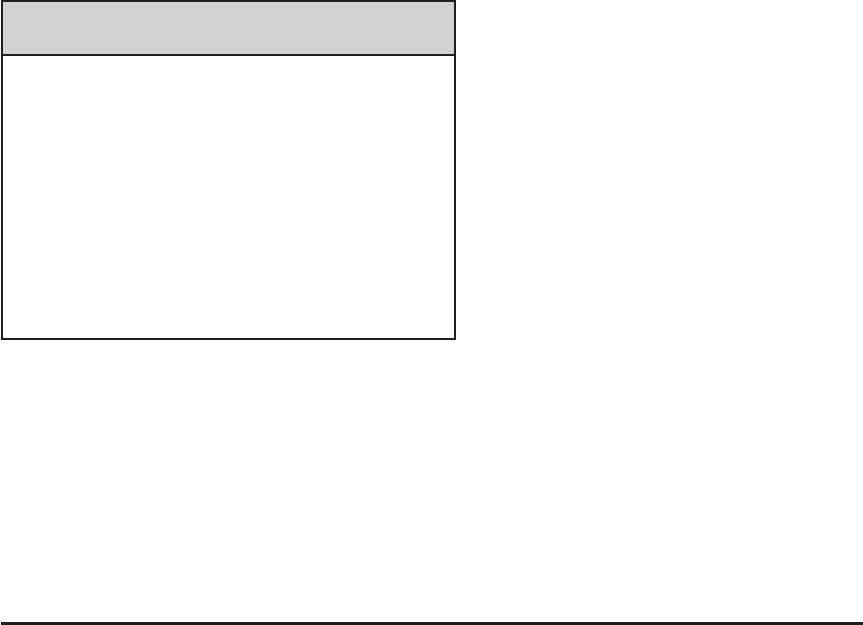
CAUTION: (Continued)
Secure rear-facing child restraints in a rear
seat, even if the airbag is off. If you secure a
forward-facing child restraint in the right front seat,
always move the front passenger seat as far back
as it will go. It is better to secure the child restraint
in a rear seat.
See Passenger Sensing System (Without Turbo/
With Turbo and RPO AS5) on page 1-66 or
Passenger Sensing System (With Turbo and RPO
AR9 or AE4) on page 1-72 for additional
information.
If your child restraint has the LATCH system, see
Lower Anchors and Tethers for Children (LATCH) on
page 1-43 for how and where to install the child restraint
using LATCH. If a child restraint is secured using a
safety belt and it uses a top tether, see Lower Anchors
and Tethers for Children (LATCH) on page 1-43 for
top tether anchor locations.
Do not secure a child seat in a position without a top
tether anchor if a national or local law requires that
the top tether be anchored, or if the instructions
that come with the child restraint say that the top
strap must be anchored.
In Canada, the law requires that forward-facing child
restraints have a top tether, and that the tether be
attached.
You will be using the lap-shoulder belt to secure the
child restraint in this position. Follow the instructions that
came with the child restraint.
1. Move the seat as far back as it will go before
securing the forward-facing child restraint.
When the passenger sensing system has turned
off the right front passenger’s frontal airbag, the off
indicator on the passenger airbag status indicator
should light and stay lit when you start the vehicle.
See Passenger Airbag Status Indicator on
page 3-31.
2. Put the child restraint on the seat.
3. Pick up the latch plate, and run the lap and shoulder
portions of the vehicle’s safety belt through or
around the restraint. The child restraint instructions
will show you how.
1-55


















